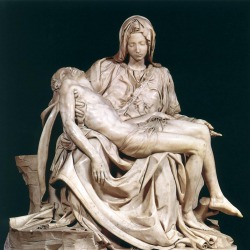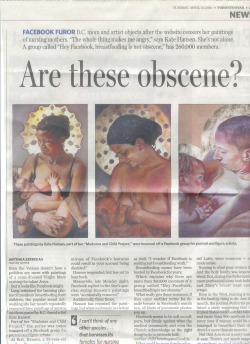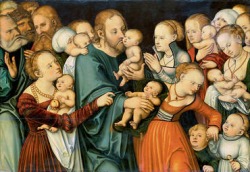|
This story is so absurd I almost laughed when I first read about in the New York Times. Yesterday Chiara Pozzi Perteghella, a pharmacist from Bassano del Grappa in Italy, was not allowed to breastfeed her 3 month old baby while taking an exam. The exam was long- 5 hours in total, and they refused to make any special allowances for her to nurse her baby during that time. They claimed that it would disrupt other students, yet they wouldn't provide her a separate room. They said she could leave to breastfeed the baby and come back, but they would not make up the time she might loose during these breaks. So that sounds bad, but get this- the exam was for certification as a BREASTFEEDING advisor! Chiara is a pharmacist and a mother of three children. Her pharmacy was already a part of the Farmacia Amica Allattamento Materno (Breastfeeding-Friendly Pharmacies - Code Complient Pharmacy,) but she wanted to increase her skills by becoming a lactatian consultant through the IBLCE. The IBLCE- International Board of Lactation Consultant Examiners is the world recognised authority for certifiying practitioners in lactation and breastfeeding care. After the birth of her son in April she informed the instructor that she would need to take the exam with her son, because he would be too young to stay with someone at that point. He was only three months old by the date of the exam, and Chiara is a follower of what she calls the "maternage approach," the Italian term for attachment parenting. She was under the impression that the arrangement was fine with them until May 18th, just two months before the exam, she was informed that only examiners and examinees may go into the room. Why? Perhaps they thought the baby might whisper her all the answers? The reason they gave was that the baby would be too distracting to the other examinees. I'm trying to imagine who might be more qualified as a breastfeeding advisor than a breastfeeding woman...? Given their evident lack of support to breastfeeding mothers completing this course I can imagine that a room full of certified breastfeeding advisors would be... men? Childless women? Who would you rather take breastfeeding advice from? Ironically the exam involved a question on the practice of "External Pregnancy," which means the mother wears the baby for several hours a day in a wrap or sling, breastfeeds frequently as needed, and even takes the baby to work with her. If the IBLCE would not make any special allowances for breastfeeding mothers, how can they expect employers to? Their new policy is about involving mother in society, making it possible to breastfeed anywhere, integrating mothers and babies instead of excluding them. In fact this year's IBLCE meeting in Chiara's home town was titled: "Women and their breastfeeding choices: cultural changes and practical support systems." All very ironic considering Chiara's treatment during one of their exams. Chiara herself said:
"I regret to say that I will not sit the exam, because I don’t think such discrimination and inconsistency should be tolerated and because I don’t like to be qualified as a breastfeeding expert by people who showed they know nothing about it."
9 Comments
The following art piece by artist Amy Jenkins was censored from a New York art gallery in May 2004. "The Audrey Samsara" Amy Jenkins, 2004 I was looking up "breastfeeding Artwork" online one evening when I found this photograph. I looked up her website right away, hoping to find out more about the "Audrey Samsara," which is the title of the artwork. The actual piece is a video of her baby Audrey nursing, falling asleep, waking to breastfeed and fall asleep again. It's a meditative and soothing loop, much like the Buddhist cycle of life and death for which it was named. I also noticed from the website that this artwork had been censored from an exhibition in New York, and I decided to contact the artist. I spoke to Amy Jenkins on the subject and she told me she was surprised by the reaction to her artwork. The artist and mother had been asked to do a piece for designer Salvatore Ferragamo to display in their 5th Avenue art gallery. She was asked to use an item from the store as inspiration, and was granted full artistic license. Amy fell in love with a little pair of red shoes named "The Audrey," and felt that it was meant to be, since her own eighteen month old baby girl was also named Audrey. Amy earned her MFA at the School of Visual Arts in New York City, but also spent some time in Florance Italy, where she completed a certificate in Fine Arts. She felt a kind of affinity for the italian background of the famous shoe designer, and agreed to create a piece for the art gallery upstairs. Her work is mostly photography and video installation; meditative and timeless loops involving themes of family, childbearing, relationships and discord. They are often both serene and disturbing; surreal yet familiar.  The video she created for them was a video of her daughter wearing the red shoes, nursed by a dark figure, so that the baby appears almost to float in mid air. Amy told me that this peice was especially meaningful to her; she called it a "tender record" of her breastfeeding experience, and was shocked by the reaction it incurred. The image evokes the timeless archetype of the Madonna and Child in a modern context. It also reflects the classical religious theme of the "Pieta," (a depiction of the Virgin Mary cradling the dead body of Christ.) La Pieta- Michaelangelo, 1499 A few hours before the scheduled opening of the show in May 2004, Amy was informed that her work had been removed. An executive found the artwork to be "distasteful" and refused to exhibit it as planned. Amy and her family bravely attended the gallery opening, hoping to speak to someone and resolve the issue, but no one would speak to her about it. They would not explain why it was considered "distasteful," and nothing was done by way of apology. Amy herself wonders if it has something to do with the fashion aesthetic of the designer store- the fact that the breasts depicted in her work were functional rather than visual. She wonders if people are so used to seeing breasts used for marketing purposes and that the sight of breastfeeding makes people uneasy. I personally also wonder if we as a society are unused to seeing the female nude from a female perspective. Breastfeeding is very much a feminine experience of the female body; it doesn't involve men or sex, and can be very personal, subjective and intimate. I would venture to guess that we as a society are unused to seeing the female nude from a female point of view; with a female gaze, if you will. The female nude as the subject rather than an object is unfamiliar to us visually, and invokes discomfort in the viewer. Perhaps the public, men and women alike, are used to seeing the female breast as an object of desire, and the breast from the inward, personal perspective of the woman doing the breastfeeding is unusual to us. Whatever the reason the reaction was the same. The artist was excluded, her point of view was rejected. The Audrey Samsara, a beautiful timeless piece, was denied to the public. As Amy Jenkins said- the flatscreen monitor which was meant to show her work was like "a black hole" in the gallery during the opening. She went on to have several articles published on her story, she had plenty of public support and found many other suitable venues to share The Audrey Samsara. I think ultimately it shows that her work is effective. It obviously created a reaction and made people think and talk about an issue that deserves attention. What started as a simple, beautiful moment between mother and daughter became something which shocked and also moved and inspired people. What more can we ask from an artist than that? As it first appeared published in "Harlot's Sauce" June 29th, 2010 After the birth of my son in 2007, I felt an incredible energy and drive to make art. Contrary to the popular belief that art-making is one of the things that fall to the wayside after the birth of children, I felt not just inspired but compelled by my experience of childbirth and motherhood. The creative act of making another human being awoke a creative drive in me. I also found that the time limitations involved in caring for an infant forced me to be more disciplined, eking out an hour here and there when my son was sleeping to continue my portraits. After my daughter’s birth in 2008, I embarked on a series of mother and child portraits accompanied by birth stories written by each subject. I wanted to simultaneously express the imperfection and fallibility of the mothers and capture an element of the divine in the mother/child bond. Each mother in the series shares her birth story—life-changing, beautiful, or harrowing—and these experiences unify a very diverse group with a common theme: love, self sacrifice and transcendence. The inspiration for this project is my children: their beauty, their challenges and the unique and universal bond of motherhood.  Each portrait is done in ‘conte crayon’ (semi hard pastel,) accented with a gold leaf halo in an echo of portraits of the Virgin Mary with child (Madonna Lactans) from the 15th century, as well as an early 20th century revival of the practice by such artists as William Adolphe Bouguereau. Working out the process of creating the haloes was complicated. I outlined the circular shapes and filled them in with the leaf in the first four portraits, then devised a way to make a pattern in the halo with “Gladys and Elizabeth.” I was thinking of rose windows, and wracking my brain for a way to make such an even pattern by hand with my limited math skills. Unable to think of anything, I set the problem aside and started cutting out snowflakes with my son instead. Then it occurred to me to cut an elaborate snowflake and use the radiating design for the halo. I outlined a snowflake pattern on each halo and painted the gold leaf sizing on to the ground of the pattern, but not the holes, waited for the sizing to dry, and then rubbed the un-sized leaf off to reveal the pattern. Three of my portraits are of mothers breastfeeding their babies. These modern Madonnas Lactans are a true celebration of motherhood. Breastfeeding can be a challenge. Many women did not witness their mothers breastfeeding and are unsure of how to do it correctly, and many are unnerved by the social stigma surrounding breastfeeding in public. The simple act of successfully breastfeeding their babies is a true victory. For me, there is an aura of joy, bliss and awe surrounding a breastfeeding mother, as she seems to embody the fundamental divinity of motherhood, the Gaia and the Virgin Mary. I personally find breastfeeding mothers so beautiful and pure that I was unprepared for the reaction my portraits generated when I posted them on the popular networking website Facebook. I posted one on a figurative artists group on Facebook, and was surprised to see that it had been removed on March 27th, 2010, just a few days later. I had already posted two more portraits, so I went ahead and reposted the one in question, thinking it must have been a glitch. My new artwork was removed on March 28th, and then on March 29th the re-posted portrait was removed as well. I reposted all three in a row, as a kind of experiment, and received the following letter by email:  Hello, You posted an item that violated our Terms of Use, and this item has been removed. Among other things, content that is hateful, threatening, or obscene is not allowed, nor is content that attacks an individual or group. Continued misuse of Facebook’s features could result in your account being disabled. If you have any questions or concerns, you can contact us at [email protected] from your login email address. The Facebook Team I went to the local CBC radio station, and was featured on the CBC Radio One morning show “On The Island” with Gregor Craigie, (go to April 9th podcast, I'm at about 7:38 in the program.) After that, the story took on a life of its own. It was covered by various CBC broadcasts, a CBC television news program in Saskatoon, CBC Radio One’s “The Story from Here,” with Sheila Coles, (listen to part two of June 23rd 2010,) CHEK-TV News in Victoria, two talk radio shows in Toronto and Montreal, the front page of the local Comox Valley Record and an article by Antonia Zerbisias in the Toronto Star. I believe that Facebook’s treatment of my breastfeeding portraits is indicative of the brutally high expectations that society holds for mothers. Mothers are expected to breastfeed, every health organization tells us it’s the best choice, yet images of women breastfeeding are labelled obscene and mothers are treated with hostility and disdain when breastfeeding in public. The result is an ideal of motherhood that no mother could possibly meet: scolded if we don’t nourish our babies exactly the way they tell us to, shamed if we dare to do it in public or celebrate and honour the unique bond it creates. A common theme throughout many of the birth stories was a sense of inadequacy. Many women felt they had not lived up to their ideal of what a mother should be, what a birth should be. There was often a sense of loneliness, as in the story of Gladys and Elizabeth. Gladys came to Canada with her Canadian husband and gave birth far away from her native Kenya, in the dead of winter. Many of us, myself included, wished to have a natural birth, and had to settle for a c section birth instead. For some women it was elating to give birth naturally after a previous c section, proving to themselves that they were capable of giving birth. For everyone the act of childbirth was a rite of passage, a moment in our lives right before motherhood, when everything changes, even one’s sense of self. I wanted to draw parallels between our own ideals of what a mother should be, and the cultural ideal of motherhood, symbolized by the Virgin Mary. I wanted to simultaneously honour both that ideal and actual motherhood in all the glory of its imperfection. My biggest issue with the Facebook censorship was that it was selective. The artwork posted on the figurative and portrait site includes many (wonderful) full nudes, while none of my portraits show more than a two-piece bathing suit would. I can only conclude that it is not the amount of bare flesh, but the subject matter of my work that they find offensive, and I find that abhorrent. Breastfeeding is not obscene. If you wish to take part in an online petition, please join my Facebook group: “Hey Facebook! Breastfeeding artwork is not obscene!”
"Couldn't she have done it in the car on the way there?" That comment was probably the worst from Lisa of the Russ and Lisa Morning Show after witnessing a woman breastfeeding her baby at a Chick Fill A restaurant in Greenville, South Carolina. She seems to be suggesting we take our babies out of their carseats and put them in the front seat of the car with us, risking that they might fly through the window in the event of an accident... all to spare someone the discomfort of witnessing them feed in a restaurant. She also said "why isn't this indecent exposure? I think there should be indecency laws." Perhaps we should make it public indecency, on par with exposing one's genitals in a restaurant, then hire a special division of the police force... let's call them the Boob Squad. They can keep all the women and children in line. She suggested that her views might have something to do with the way she was raised, that someone with more traditional values might be more discreet than to nurse in public. She also suggested women stay at home rather than expose the public to an "intimate moment" like breastfeeding. Her suggestion implies that a breastfeeding mothers in the past would have to stay at home rather than participate in public life. Certainly this would be their only option, before formula was widely available... She suggested mothers come prepared, pump and bring a bottle rather than breastfeed. She told one caller that pumping is no more difficult than preparing a bottle of formula and bringing it to the restaurant. One caller commented that "If you wouldn't do it in the front pew of a church, then don't do it in a restaurant." What about this church? Surely the mother of God might object if you didn't use a bottle, come prepared as she suggested. Jesus himself would certainly object to public breastfeeding, wouldn't he? What Lisa fails to realize is that bottle feeding as a conservative value is actually fairly recent. Women never used to feel shame at public breastfeeding, nor were they pressured by their communities to keep "such an intimate act" private. Breastfeeding was considered to be quite matter of fact most of the time, and rather beautiful and womanly some of the time. It wasn't equated with sexuality as it is now, or else we would never see an icon of the Virgin Mary breastfeeding
in public in a church. Or perhaps she's suggesting that the mother of God was a little loose in her morals? |
A blog on art, roller derby and life.
Kate HansenI'm an artist and mother of two in Courtenay, BC. I've completed a project called the "Madonna and Child Project," and I'm now working on a series of roller derby inspired drawings. In my spare time I play roller derby with the Brick House Betties. Archives
November 2012
Categories
All
|














 RSS Feed
RSS Feed
